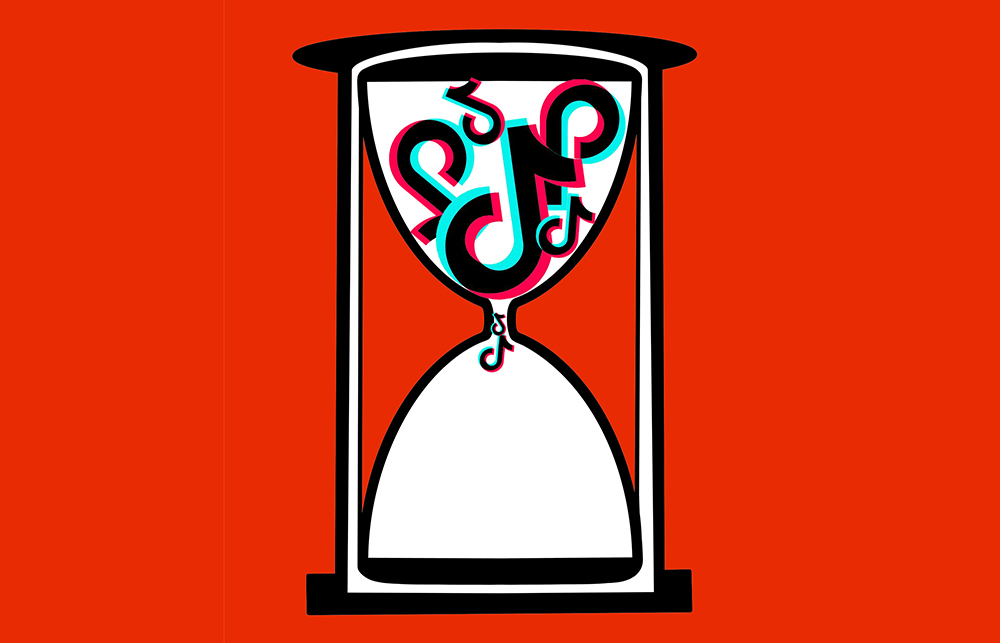有传闻称,TikTok会成为中美关系日益紧张的下一个牺牲品。据媒体报道,出于“网络安全”担忧,特朗普政府计划禁用这款中国应用程序,并且大公司和政府机构已经警告员工不要在办公设备上使用这款应用程序。但与此同时,各大品牌商却投入大量资金在TikTok上打广告。
即使TikTok可能被禁用也没有打消品牌商的热情,他们甚至会告诉你,在TikTok上打广告回报高,值得冒险。对于仍然在观望的品牌商而言,在TikTok上大力投放赞助广告,将提高销量和品牌知名度,无论这款应用程序的最终命运会如何。最糟糕的情况是TikTok被禁用,但品牌商依旧有机会在TikTok的用户中提高品牌知名度;最好的结果是TikTok幸免于难,品牌商可以在该平台上站稳脚跟,迎来繁荣增长。

TikTok的设计以用户参与为核心,这是其他视频分享应用程序所不具备的(比如Vine)。所以,品牌商和内容创作者只要很短时间就能在该平台上获利。即使在TikTok前途未卜的情况下,聪明的品牌商也不会放弃这款广告工具。65.3%的TikTok用户不超过29岁,所以在该平台上投放广告,就是在投资这批受众的购买力。随着用户年龄的增长,他们的购买力只会增强并且日益成熟。只要他们最喜欢的应用程序依旧存在,品牌商就应该面向他们投放广告,这是显而易见的。
TikTok上的内容会在短期内被看到并促使用户采取行动。这款应用程序上的一个热门话题或挑战的平均寿命只有一周左右。不过TikTok视频并不像YouTube和Instagram等平台上的视频一样,具有经久不衰的价值,但它们根本不需要这样的价值!一条视频走红不需要太长时间:去年夏天,Chipotle的#GuacDance挑战只持续了六天,用户提交了25万条TikTok视频,播放次数达到4.3亿次,鳄梨酱的使用量增加了68%。迅速在TikTok上投放广告的品牌商,也将很快受益。一条热门广告能够提高长期品牌认知度,这种效应不会随着这款应用程序被禁用而消失。
前不久,许多品牌商抵制Facebook广告,因此他们更有理由将TikTok作为一个既有成本效益又有影响力的渠道去接触年轻受众。前文所述的29岁以下的用户也是Instagram的主力用户群体,但他们不再像以前一样使用Facebook。要想让这个群体重新了解一个品牌,品牌商只需要花很少的钱聘请小网红在TikTok上发起一项活动。
但如果美国政府确实祭出禁令呢?当TikTok谢幕,而各大品牌仍在加大宣传支出的时候,品牌商为这个平台制定的预算将流向何方?在TikTok上成名(并赚的盆满钵满)的网红们怎么办?
TikTok有出色的编辑能力和视觉特效,但它的模式并非专利,Facebook、Snapchat和Instagram等大平台都有资源尝试复制这种模式,而且许多平台会抓住机会。大部分TikTok用户可能已经在使用这些平台,他们或许会成为被动的广告受众。
网红们要想维持与美国粉丝和品牌商的联系,他们别无选择,只能转战其他平台。Snapchat和YouTube等拥有强大视频功能的应用程序会涌入大批新网红,希望把他们在TikTok上的成功延续到新的平台。
品牌商应该关注用户和网红们的习惯,但他们也不应该低估市场活动的影响。美国政府正在考虑禁用TikTok的消息曝光之后,Snap的股价大涨6.5%,这表明华尔街认为Snap可能会接收TikTok的用户和广告商。随着各大品牌商继续抵制Facebook(包括Instagram),Snapchat可能会成为市场争夺者之一。
当然,在疫情期间捂紧钱袋的品牌商可以选择彻底砍掉在TikTok上的支出,付出的代价就是发展势头受阻。万一政府发布禁令然后撤销禁令,那些在禁令之前押注TikTok的品牌商,将比小心翼翼的品牌商们获得更多优势。
TikTok主要面向“95后”,是增长最快的社交媒体平台。对于这样一个平台,品牌商值得冒险加以利用。如果TikTok被禁用,这些勇于冒险的品牌商也会马上追随客户(和他们的钱包)转到其他平台。对此,我的建议是品牌商要敢于冒险。(财富中文网)
本文作者贾斯汀•克兰是网红营销技术合作伙伴与平台Markerly的联合创始人。该平台的合作伙伴包括许多全球最大的消费品牌。
译者:Biz
有传闻称,TikTok会成为中美关系日益紧张的下一个牺牲品。据媒体报道,出于“网络安全”担忧,特朗普政府计划禁用这款中国应用程序,并且大公司和政府机构已经警告员工不要在办公设备上使用这款应用程序。但与此同时,各大品牌商却投入大量资金在TikTok上打广告。
即使TikTok可能被禁用也没有打消品牌商的热情,他们甚至会告诉你,在TikTok上打广告回报高,值得冒险。对于仍然在观望的品牌商而言,在TikTok上大力投放赞助广告,将提高销量和品牌知名度,无论这款应用程序的最终命运会如何。最糟糕的情况是TikTok被禁用,但品牌商依旧有机会在TikTok的用户中提高品牌知名度;最好的结果是TikTok幸免于难,品牌商可以在该平台上站稳脚跟,迎来繁荣增长。
TikTok的设计以用户参与为核心,这是其他视频分享应用程序所不具备的(比如Vine)。所以,品牌商和内容创作者只要很短时间就能在该平台上获利。即使在TikTok前途未卜的情况下,聪明的品牌商也不会放弃这款广告工具。65.3%的TikTok用户不超过29岁,所以在该平台上投放广告,就是在投资这批受众的购买力。随着用户年龄的增长,他们的购买力只会增强并且日益成熟。只要他们最喜欢的应用程序依旧存在,品牌商就应该面向他们投放广告,这是显而易见的。
TikTok上的内容会在短期内被看到并促使用户采取行动。这款应用程序上的一个热门话题或挑战的平均寿命只有一周左右。不过TikTok视频并不像YouTube和Instagram等平台上的视频一样,具有经久不衰的价值,但它们根本不需要这样的价值!一条视频走红不需要太长时间:去年夏天,Chipotle的#GuacDance挑战只持续了六天,用户提交了25万条TikTok视频,播放次数达到4.3亿次,鳄梨酱的使用量增加了68%。迅速在TikTok上投放广告的品牌商,也将很快受益。一条热门广告能够提高长期品牌认知度,这种效应不会随着这款应用程序被禁用而消失。
前不久,许多品牌商抵制Facebook广告,因此他们更有理由将TikTok作为一个既有成本效益又有影响力的渠道去接触年轻受众。前文所述的29岁以下的用户也是Instagram的主力用户群体,但他们不再像以前一样使用Facebook。要想让这个群体重新了解一个品牌,品牌商只需要花很少的钱聘请小网红在TikTok上发起一项活动。
但如果美国政府确实祭出禁令呢?当TikTok谢幕,而各大品牌仍在加大宣传支出的时候,品牌商为这个平台制定的预算将流向何方?在TikTok上成名(并赚的盆满钵满)的网红们怎么办?
TikTok有出色的编辑能力和视觉特效,但它的模式并非专利,Facebook、Snapchat和Instagram等大平台都有资源尝试复制这种模式,而且许多平台会抓住机会。大部分TikTok用户可能已经在使用这些平台,他们或许会成为被动的广告受众。
网红们要想维持与美国粉丝和品牌商的联系,他们别无选择,只能转战其他平台。Snapchat和YouTube等拥有强大视频功能的应用程序会涌入大批新网红,希望把他们在TikTok上的成功延续到新的平台。
品牌商应该关注用户和网红们的习惯,但他们也不应该低估市场活动的影响。美国政府正在考虑禁用TikTok的消息曝光之后,Snap的股价大涨6.5%,这表明华尔街认为Snap可能会接收TikTok的用户和广告商。随着各大品牌商继续抵制Facebook(包括Instagram),Snapchat可能会成为市场争夺者之一。
当然,在疫情期间捂紧钱袋的品牌商可以选择彻底砍掉在TikTok上的支出,付出的代价就是发展势头受阻。万一政府发布禁令然后撤销禁令,那些在禁令之前押注TikTok的品牌商,将比小心翼翼的品牌商们获得更多优势。
TikTok主要面向“95后”,是增长最快的社交媒体平台。对于这样一个平台,品牌商值得冒险加以利用。如果TikTok被禁用,这些勇于冒险的品牌商也会马上追随客户(和他们的钱包)转到其他平台。对此,我的建议是品牌商要敢于冒险。(财富中文网)
本文作者贾斯汀•克兰是网红营销技术合作伙伴与平台Markerly的联合创始人。该平台的合作伙伴包括许多全球最大的消费品牌。
译者:Biz
TikTok is rumored to be the next casualty of growing tensions between the U.S. and China. The Trump administration is reportedly looking at banning the Chinese app over cybersecurity concerns, and major companies and government entities have warned employees against using the app on corporate-owned devices. This news comes at a time when brands are shelling out major cash to advertise on TikTok.
Even in the face of a potential ban, brands won’t be deterred and might even tell you that the rewards of TikTok make it worth the risk. For those on the fence, going all-in on sponsored campaigns now will drive sales and awareness—regardless of the fate of the app. In the worst-case scenario, TikTok is banned, but you had one last chance to make a name for your brand among users; in the best-case scenario, TikTok survives, and you’ve established a foothold there that will grow and thrive with the app.
TikTok is built for participation and engagement in a way that no other video sharing app is or was (sorry, Vine). So naturally, it didn’t take long for brands and creators to monetize the platform. Even with an uncertain fate, smart brands won’t shy away from it as an advertising tool. Of TikTok users overall, 65.3% are under 29, so to invest in campaigns on the platform is to invest in this audience’s buying power, which will only grow and mature as they do. As long as their favorite app still exists, reaching them there with ads is a no-brainer.
TikTok’s content is meant to be consumed and acted on immediately. The shelf life of an average meme or challenge on the app is roughly a week. Videos on TikTok don’t have the same evergreen value as their cousins on YouTube and Instagram—but they don’t need it! It doesn’t take long to make an impact: Last summer, Chipotle’s #GuacDance challenge ran for just six days and garnered 250,000 TikTok submissions and 430 million video starts, all resulting in a 68% increase in avocado usage. Brands that act fast to launch TikTok advertising will reap the benefits just as quickly. One viral campaign can lead to long-term brand recognition that could outlast the app itself.
With many brands boycotting advertising on Facebook, TikTok is in an even stronger position as a cost-effective and impactful channel for reaching younger audiences. The aforementioned under-29 crew has a strong presence on Instagram but isn’t using Facebook like it used to. A single low-cost micro-influencer campaign on TikTok could be all it takes for a brand to reawaken awareness among this group.
Let’s get real for a second: It’s more likely that TikTok will leave China before the U.S. bans it. But what if a ban does occur? As TikTok sings its proverbial swan song and brands go all-in on spending, where will budgets earmarked for the platform go? And what about the influencers who have made names (and millions) for themselves?
TikTok has incredible editing capabilities and visual effects, but its model isn’t proprietary—major platforms like Facebook, Snapchat, and Instagram all have the resources to attempt to replicate it, and many will seize the opportunity. The majority of TikTok users likely already have a presence on these networks and may be a captive audience.
If influencers want to remain engaged with U.S. followers and brands, they will have no choice but to explore other platforms. Apps with robust video offerings such as Snapchat and YouTube could see an influx of new influencers looking to carry their TikTok success over to a new setting.
Brands should pay attention to user—and influencer—habits, but they also shouldn’t discount market activity. Snap’s stock jumped 6.5% following the announcement discussing the potential ban, indicating that Wall Street believes it may be well positioned to become the beneficiary of TikTok’s users and advertisers. With brands committing to a wholesale Facebook boycott (including Instagram), Snapchat could become that much more of a contender.
Of course, brands keeping their purse strings tight during the pandemic may elect to pause spending on TikTok entirely—and will end up paying for it in the form of stymied momentum. If a ban occurs, which is then reversed, the brands who gambled on TikTok pre-ban will have an edge over those who played it safe.
The ability to tap into the fastest-growing social platform geared specifically toward Generation Z makes TikTok a risk worth taking—despite the prospect of a national ban. And if TikTok is banned, those same risk-taking brands won’t waste time following their customers and their wallets to another platform. My advice is to take the risk.
Justin Kline is cofounder of Markerly, an influencer marketing technology partner and platform working with some of the largest consumer brands in the world.






